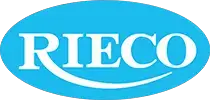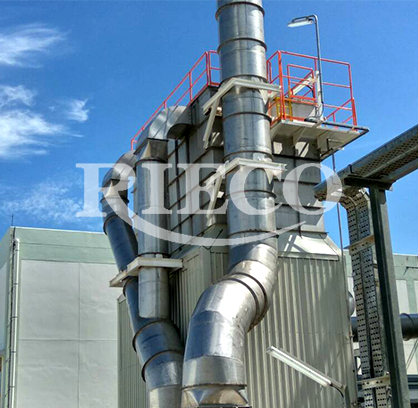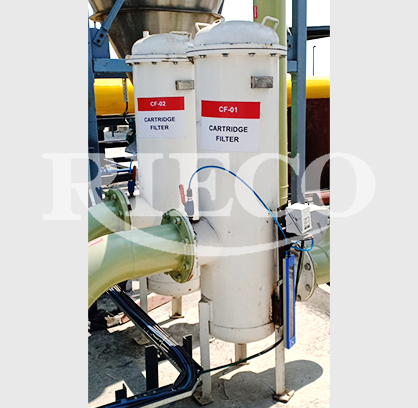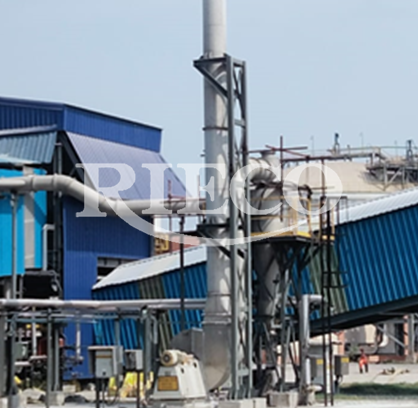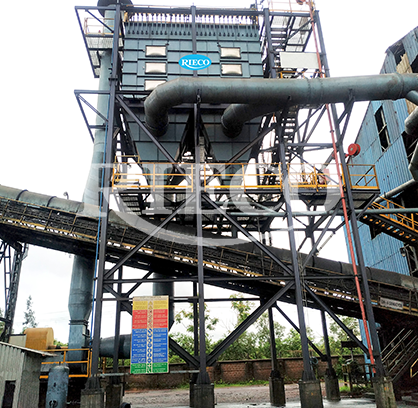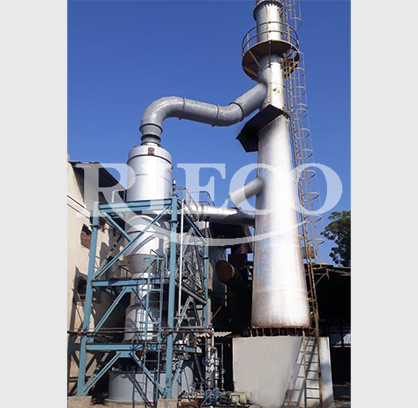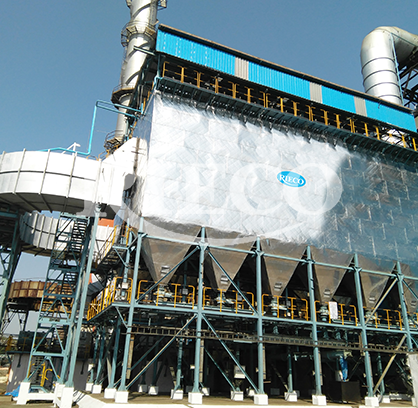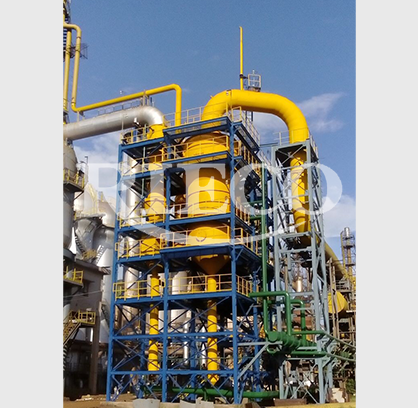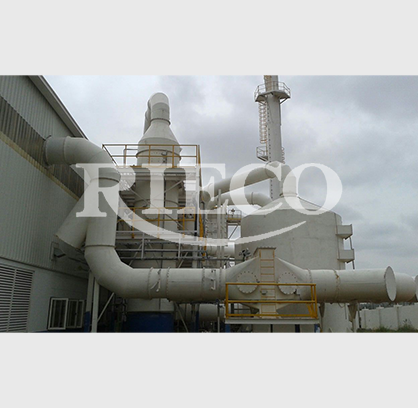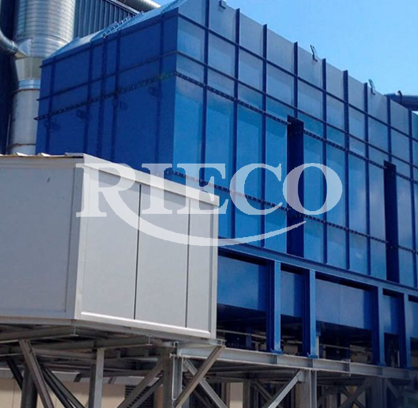
Electrostatic Precipitator (ESP)
Balancing on the cutting edge of technology and environmental responsibility, Rieco’s Electrostatic Precipitator (ESP), also known as an electrostatic air cleaner, embodies innovative strides toward a more sustainable future. As a leading electrostatic precipitator manufacturer in India, we provide advanced solutions to combat industrial pollution. Our ESP systems harness the power of static electricity to efficiently capture fly ash particles and pollutants from exhaust gases, ensuring cleaner air. With high collection efficiency, our ESP technology applies energy only to the particulate matter, making air pollution control more effective by attracting positively charged particles within the collector plates.
- Function: Dry ESPs are designed to operate under dry conditions, meaning they collect dry particulates without the use of any liquid with the help of electrostatic force impeding the flow of gases. They later build up on the collection in the hoppers at the bottom.
- Structure: Typically, they consist of vertically hung, parallel plates. Between these plate precipitators, a corona discharge imparts an electrical charge to the particulate matter in the exhaust gas stream.
- Particle Collection: Once charged, these particles are attracted to the collection plates and adhere to them. Over time, the accumulated particles are periodically rapped off and collected in hoppers at the bottom.
- Applications: Dry Electrostatic Precipitators (ESPs) are widely used in power plants, especially coal-fired and bio-mass ones, cement factories, all Steel Applications and various other industrial settings where dry particulate emissions need control.
- Advantages: It can take process fluctuations. Since there's no liquid involved, there's no need for wastewater treatment. They also tend to have a longer operational life and lower operating costs than wet Electrostatic Precipitators (ESPs) in the appropriate high voltage settings.
- Function: Wet ESPs are designed to handle moist or sticky particulate matter or where the gas stream has a high moisture content. They utilize water or other cleaning liquids to wash away the collected particles.
- Structure: The design often includes tubular collecting electrodes. The charged particles in the gas stream are attracted to the inner surfaces of these tubes.
- Particle Collection: As the particles collect on the tubes, they are continually or periodically washed away by a liquid, ensuring that the collecting surfaces remain clean.
- Applications: Wet ESPs are preferred in industries such as pulp and paper mills, petrochemical plants, Producer Gas Plant or any setting where the particulate is wet, sticky, or has a high moisture content.
- Advantages: The primary advantage is their ability to handle sticky particulates that might be challenging for dry ESPs. They can also help in removing gaseous contaminants and mists, providing cleaner emissions.
- The choice between a dry and wet ESP often boils down to the nature of the particulate matter, the moisture content of the gas stream, and specific industrial requirements.
Rieco, a leading electrostatic precipitator manufacturer in India, provides ESPs with numerous benefits, making them ideal for various industries:
- Collaboration Expertise: Our partnership with Southernfield Environmental Elements of the US brings in over 65 years of ESP experience, ensuring state-of-the-art solutions.
- Superior Cleaning Efficiency: Our ESPs deliver unmatched cleaning efficiencies across diverse applications. We promise emissions as low as 10 mg/Nm3*. (*Subject to application, inlet dust load, and specific dust and gas characteristics.
- Varied Rapping Systems: Choose from three distinct rapping systems: MIGI type, Tumbling Hammer type, and Cam operated type.
- Emitting Electrode Designs: We offer two unique designs for emitting electrodes - the Rigid pipe & spike type, and the Saw tooth type made of SS304 MOC.
- Advanced Collecting Electrodes: Our collecting electrodes feature an interlock design. This minimizes draft losses and prevents dust re-entrapment during the rapping process.
- Dry and Wet Variants: Choose between dry or wet ESPs based on specific industrial needs.
- Continuous Operation: Designed for non-stop operation, there's no need for frequent shutdowns.
- High Temperature Suitability: Perfectly compatible with high-temperature exhaust streams.
Why Rieco?
in your process challenges.




we are happy to answer
